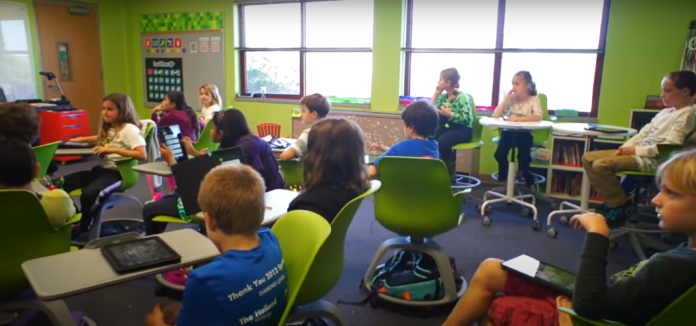This video looks at the impacts of new, flexible learning environments in a school district. The students were all given iPads and rolling desks, and classrooms were remodeled to encourage more movement and autonomy. Many of the teachers were a little nervous about the lack of control at first, but they realized that “giving that up a little bit allows students to rise up to the occasion and they become incredibly responsible with the tools. . . and the environment that they share.” It seemed that students felt a lot more comfortable in a desk that encouraged natural movement rather than restricting it.
Analysis:
I found it extremely intriguing how the students and teachers reacted to this new learning environment. Injecting a little bit of flexibility with the rolling desks and escaping from the traditional rigidity of the classroom encouraged students to open up and engage more than they did before. The autonomy and flexibility of the new learning environments reminded me of the present-day shift to online learning. If a less rigid environment was successful at school, why wouldn’t it be successful at home? How might students, teachers, and parents take advantage of and get creative with the flexibility of online schooling to help enhance the student learning experience? How might young students begin to learn independence and autonomy in learning at home, especially if their parents are busy at work? The seating is certainly an interesting aspect of flexibility and allowing natural movement, but I believe that is only scratching the surface of how learning can be transformed for the better in the home.




